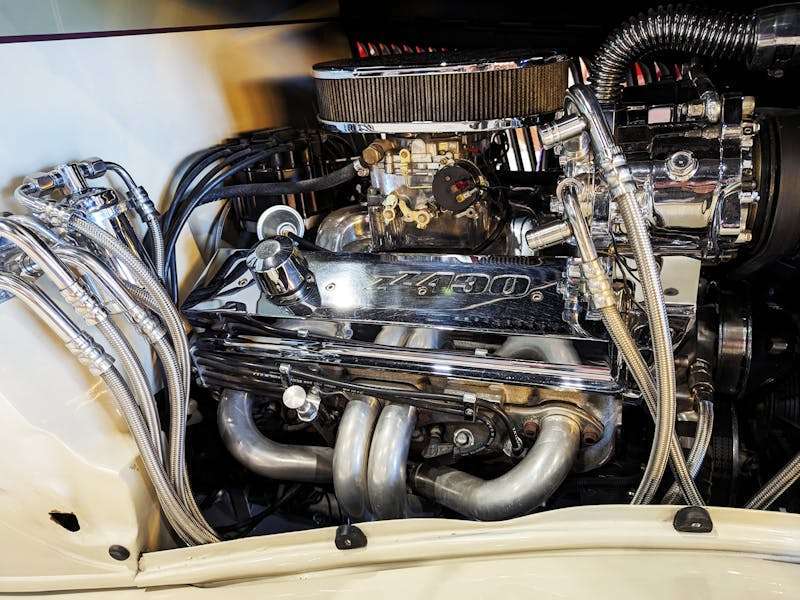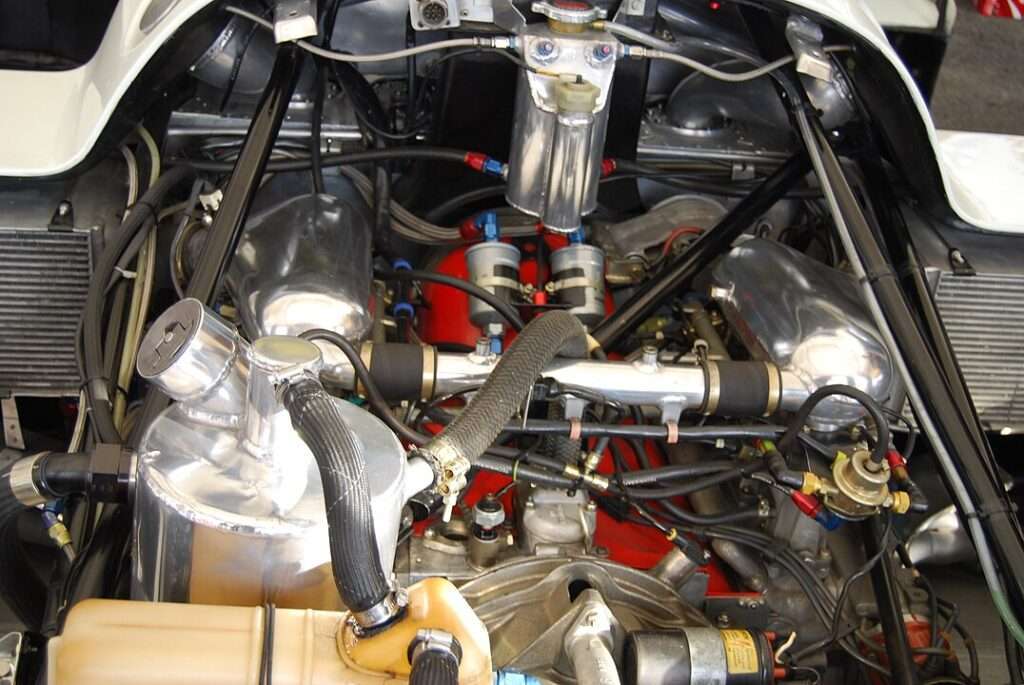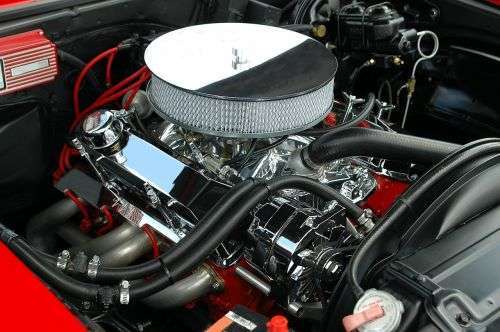Modern internal combustion engines use sequential fuel injection where fuel injectors are controlled individually and fired in sequence to deliver precise amounts of fuel directly into each cylinder’s intake port or combustion chamber at the optimal time during the engine’s intake stroke.
Sequential fuel injection is used in internal combustion engines to ensure precise fuel delivery to each engine cylinder. It optimizes engine performance and fuel efficiency by delivering the right amount of fuel at the right time.
Older vehicle fuel systems used carburetors which were struggling to maintain the ideal fuel mixture. However, sequential fuel injection has now taken over carburetor systems to become the standard in most gasoline-powered vehicles today.
Sequential fuel injection uses electronic sensors and injectors to precisely time and meter the fuel delivered into each cylinder during the intake stroke. This precise control allows for better combustion, increased power output, improved emissions, and enhanced overall engine performance.
How does sequential fuel injection work?
Sequential fuel injection system ensures precise delivery of fuel to each cylinder at the right time.
1). Sequential fuel injection uses sensors.
Sensors play a vital role in monitoring engine conditions and relaying information to the electronic control unit (ECU). These sensors keep an eye on factors like throttle position, engine speed, and intake air temperature.
2). Engine control unit works with sequential fuel injection.
The electronic control unit takes the sensor’s signals into account and calculates the optimal amount of fuel required for combustion based on the current engine conditions. This calculation helps achieve efficient fuel usage and better performance.
3). Injectors within the sequential fuel injection system.
Once the electronic control unit determines the appropriate amount of fuel, it sends signals to individual injectors located near each cylinder.
When signaled by the ECU, these injectors spray atomized fuel directly into either the intake port or combustion chamber of each cylinder. Sequential fuel injection ensures precise timing and distribution by delivering fuel separately to each cylinder.
Advantages of sequential fuel injection.

The several advantages of sequential fuel injection are improved engine performance, power output, and throttle response.
1). Combustion efficiency.
With this system, high fuel pressure is utilized to deliver fuel to each cylinder individually in a precise and sequential manner. This targeted approach ensures that the right amount of fuel is delivered at the right time, optimizing combustion efficiency.
2). Fuel economy.
Enhanced fuel economy and reduced emissions are achieved through precise control over air-fuel mixture ratios. Sequential fuel injection allows for better atomization and distribution by delivering fuel directly into each cylinder during its intake stroke.
Hence, resulting in more complete combustion, reducing fuel consumption and minimizing harmful emissions.
3). Cold start reliability.
Cold start reliability is improved because sequential systems provide better atomization during initial startup. By precisely timing the injection process, the system ensures that an adequate amount of atomized fuel is delivered to each cylinder even in cold conditions. This ensures easier ignition and smoother engine operation from the moment you start your vehicle.
4). Easier troubleshooting.
The ability to diagnose individual cylinder issues makes troubleshooting easier with sequential systems. Since each cylinder has its own dedicated injector, any problems or malfunctions can be isolated to a specific cylinder. This simplifies the diagnostic process by allowing mechanics to identify and address issues more efficiently.
Disadvantages of sequential fuel injection.
Consider these disadvantages when evaluating whether sequential fuel injection is the right choice for your specific needs. While it offers benefits such as improved fuel efficiency and precise control over the air-fuel mixture, understanding its drawbacks is crucial for making an informed decision.
1). High cost.
Higher cost compared to other types of fuel injection systems can be a disadvantage for some consumers. Sequential fuel injection systems tend to be more expensive than alternative options, which may deter budget-conscious individuals.
2). Complex design.
Complex design and additional components may require more maintenance or repairs over time. The intricate nature of sequential fuel injection systems leads to increased maintenance needs and potential repair costs down the line.
3). Possibility of injector clogging or malfunctioning.
Injector clogging or malfunctioning occurs in rare cases and affects engine performance negatively. Fuel injection cleaning will restore engine efficiency and power.
4). Upgrade complexity
Retrofitting older vehicles with sequential systems may require significant modifications. Upgrading older vehicles with sequential fuel injection systems often necessitates substantial modifications to the existing engine setup, making it a complex and potentially costly process.
Benefits of multiport in sequential fuel injection systems.
The benefits of a multiport in sequential fuel injection systems are precise control over the timing, combustion efficiency, better fuel atomization and improved throttle response.
A “multiport” in sequential fuel injection systems, refers to the arrangement of fuel injectors positioned at each intake port of the engine’s cylinders. Each injector is responsible for delivering fuel directly into the intake port or combustion chamber of its corresponding cylinder.
The multiport configuration ensures an even distribution of atomized fuel across all cylinders simultaneously, resulting in optimal combustion efficiency. Each cylinder receives an equal amount of air-fuel mixture, promoting smoother idle and improved throttle response.
With precise control over the timing and duration of each injector pulse, multiport sequential systems offer better fuel atomization. Additionally, the utilization of multiple ports in the intake system allows for enhanced benefits in sequential fuel injection.
1). Fuel is evenly distributed.
The atomized fuel is evenly distributed among all cylinders at the same time. Hence, ensuring that each cylinder receives the required amount of air-fuel mixture. This balanced distribution optimizes combustion efficiency.
2). Throttle response is improved.
The use of multiple ports allows for quicker response when the accelerator pedal is pressed. This results in improved throttle response and a more enjoyable driving experience.
3). Idle becomes smoother.
Thanks to the even distribution of fuel across all cylinders, multiport sequential systems provide a smoother idle compared to other injection methods. This reduces engine vibrations and enhances overall comfort during idling periods.
4). Precise control over injector pulses.
Multiport sequential systems offer precise control over the timing and duration of each injector pulse. This level of control enables better fuel atomization, maximizing combustion efficiency and reducing emissions.
5). Enhanced benefits from using multiple ports.
By utilizing multiple ports in the intake system, multiport injection provides additional advantages such as increased power output, improved torque delivery, and optimized fuel economy.
Sequential fuel injection vs other fuel injection systems.

The advantages of sequential fuel injection systems over other fuel injection systems are cost effectiveness, better throttle response, air-fuel mixture control and enhanced engine performance.
1). Better air-fuel mixture control.
Sequential fuel injection provides superior control over the air-fuel mixture compared to throttle body injection. Sequential systems ensure optimal combustion efficiency by injecting fuel directly into each cylinder at precisely timed intervals.
2). Cost-effective solution.
Compared to direct fuel injection, sequential systems are generally less complex and more cost-effective. They offer a reliable and efficient method of delivering fuel without the added complexity of individual cylinder injectors or timed systems.
3). Quicker throttle response.
One notable advantage of sequential fuel injection is its quicker throttle response. In older continuous or batch systems all cylinders receive fuel simultaneously.
However, in sequential injection individual cylinders receive precisely timed injections. This results in improved throttle response and smoother engine performance.
4). Enhanced engine performance.
Sequential fuel injection offers improved overall engine performance compared to single-point injection. These systems optimize power output, torque delivery, and overall drivability by offering precise control over the amount and timing of injected fuel.
Sequential fuel injection vs multi-point fuel injection system.
Multi-point fuel injection, also known as point injection, delivers fuel simultaneously to all cylinders while sequential fuel injection injects fuel individually into each cylinder.
In multi-point systems, each injector sprays into the intake manifold near the respective cylinder’s intake valve. This ensures that fuel is evenly distributed among all cylinders.
Sequential systems provide more precise control over the timing and duration of each injector pulse compared to multi-point. This allows for optimized combustion and efficient fuel delivery.
Sequential fuel injection tends to offer better results. By precisely controlling the amount of fuel injected into each cylinder at the right time, it maximizes power output and minimizes wasted fuel.
Sequential fuel injection vs batch.
In a sequential fuel injection system, each injector delivers fuel to its respective cylinder independently while batch or group fire injectors spray together for a specific number of cylinders simultaneously.
Injectors within the sequential fuel injection system are fired one after another in a precise sequence, ensuring that each cylinder receives the right amount of fuel at the right time. However, in the batch firing system, multiple cylinders receive fuel at once before moving on to the next group.
Sequential injection optimizes combustion efficiency and power output by individually controlling the timing and metering of fuel delivery. Alternatively, batch firing can lead to an uneven distribution of the air-fuel mixture among cylinders under certain engine conditions. Therefore, some cylinders may receive more or less fuel than others, affecting overall performance.
While both sequential injection and batch firing methods serve the purpose of delivering fuel to the engine, they differ in their approach. Let’s take a closer look at how these two techniques compare.
Advantages of sequential fuel injection over batch firing.
The advantages of sequential fuel injection over batch firing are precise timing and accurate metering.
1). Precise timing.
With sequential injection, each cylinder receives precisely timed amounts of fuel based on its individual requirements. This allows for optimal combustion and improved engine performance.
2). Accurate metering.
Sequential injection ensures that no cylinder is left with an inadequate or excessive supply by independently metering the amount of fuel delivered to each cylinder.
Understanding the secondary ignition pattern in sequential fuel injection.
The secondary ignition pattern refers to the firing order sequence of spark plugs in a specific engine configuration. It determines the order in which individual cylinders receive spark for combustion within an engine cycle. This pattern is crucial for proper synchronization between spark plug firing and injector pulses.
Analyzing the secondary ignition pattern will help to diagnose potential issues related to misfires or inconsistent cylinder performance. Identifying any discrepancies or abnormalities that may be affecting engine efficiency requires an understanding of this pattern.
The secondary ignition pattern ensures that each cylinder receives spark at the right time during the combustion process. In sequential fuel injection systems, the firing order follows a specific sequence designed for optimal engine performance.
A misfire in one cylinder can disrupt the entire ignition pattern, leading to reduced power output and increased emissions. Inconsistent or irregular firing patterns indicate problems with spark plug wires, ignition coils, or other components of the ignition system.
Monitoring and maintaining a consistent secondary ignition pattern is essential for maximizing fuel efficiency and prolonging engine life. Engines run smoothly and perform optimally through proper synchronization between spark plug firing and injector pulses.

